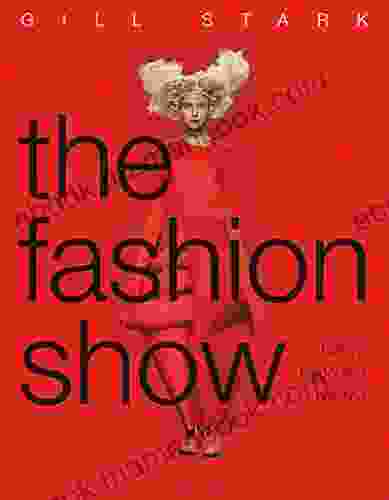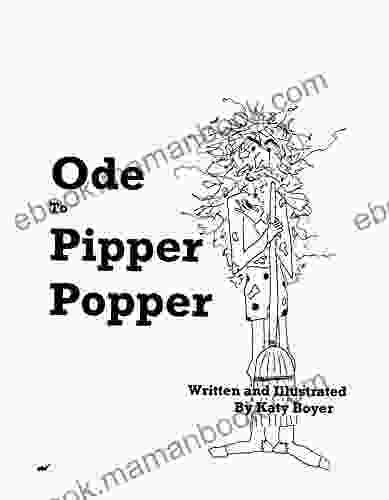The Fashion Show: History, Theory, and Practice

Fashion shows have become an intrinsic part of the fashion industry, serving as a platform for designers to showcase their latest creations to a select audience of buyers, press, and VIPs. These events have evolved from intimate gatherings to extravagant spectacles, shaping not only the fashion landscape but also our perception of beauty and style.
The Early Days of Fashion Shows
The first recorded fashion show took place in Paris in 1858, organized by the renowned dressmaker Charles Frederick Worth. Worth invited a select group of clients to his salon to unveil his new designs, a revolutionary concept that marked a departure from the traditional practice of privately showing garments to individual customers.
5 out of 5
| Language | : | English |
| File size | : | 46497 KB |
| Text-to-Speech | : | Enabled |
| Screen Reader | : | Supported |
| Enhanced typesetting | : | Enabled |
| Word Wise | : | Enabled |
| Print length | : | 200 pages |
| X-Ray for textbooks | : | Enabled |
Worth's fashion shows became a sensation, attracting the attention of wealthy patrons and socialites who clamored to witness the latest trends. By the turn of the 20th century, fashion shows had become a fixture in the fashion capitals of Europe, with Paris, London, and Milan vying for supremacy.
The Influence of Couture and Ready-to-Wear
In the early days, fashion shows primarily catered to the elite, showcasing haute couture garments meticulously crafted by hand in exclusive ateliers. However, the rise of ready-to-wear in the 1950s and 1960s made it possible for a wider audience to experience the allure of fashion shows.
Ready-to-wear collections, mass-produced in standardized sizes, allowed designers to reach a larger customer base and democratize fashion. The growing popularity of ready-to-wear led to the emergence of mass-market fashion shows, targeting a broader spectrum of consumers.
The Evolution of the Runway
Over the years, the format of fashion shows has undergone significant changes. Initially, models simply walked down a straight runway, showcasing garments from all angles. However, in the 1970s, designers began to experiment with more theatrical presentations, incorporating music, lighting, and live performances.
The runway has since transformed into a stage for creative expression, with designers using innovative set designs, projections, and unconventional models to capture the attention of audiences. Some shows have become immersive experiences, blurring the lines between fashion and performance art.
The Impact of Fashion Shows
Fashion shows hold immense influence beyond the immediate circle of industry professionals. They serve as a platform for designers to establish their brand identity, generate buzz for their collections, and drive sales. Shows also provide a glimpse into the creative process of designers, allowing them to share their vision with the world.
Fashion shows have also become a cultural phenomenon, shaping trends, influencing popular culture, and inspiring countless fashion-forward individuals. The media coverage of shows generates widespread excitement and anticipation, with fashion enthusiasts eagerly following the latest developments.
Theories of Fashion Shows
Scholars and theorists have explored the multifaceted nature of fashion shows, proposing various theories that seek to explain their significance and impact.
The Semiotic Theory: This theory views fashion shows as a form of communication, where designers use garments to convey messages and ideas. The runway becomes a stage for semiotic performances, with each element contributing to the overall meaning.
The Economic Theory: This theory focuses on the commercial aspect of fashion shows, considering them as marketing tools designed to generate revenue. Designers invest heavily in shows to showcase their collections, attract buyers, and increase brand awareness.
The Technological Theory: This theory examines the role of technology in shaping the format and impact of fashion shows. Advancements in lighting, sound systems, and digital media have enhanced the immersive experience, allowing designers to create more elaborate presentations.
The Practice of Fashion Shows
Organizing a successful fashion show requires meticulous planning and a keen attention to detail. Here are some of the key steps involved in the process:
Concept Development: The first step is to develop a clear concept for the show, including the overall theme, mood, and aesthetic.
Venue Selection: The venue should be spacious enough to accommodate the show, while creating a suitable atmosphere for the brand.
Casting: Models are carefully selected to fit the designer's aesthetic and convey the message of the collection.
Choreography and Lighting: The choreography of the show determines the flow and rhythm of the garments, while lighting creates the desired ambiance.
Production: The production team oversees all aspects of the show, including sound, music, and logistics.
Fashion shows have evolved from exclusive events for the elite into powerful platforms that shape our perception of fashion, art, and commerce. They have become a global spectacle, captivating audiences with their creativity, glamour, and influence. By understanding the history, theory, and practice of fashion shows, we can appreciate their multifaceted nature and their enduring impact on our cultural landscape.
Image Alt Attributes:
1. Image 1: A photograph of a model walking down a runway in a designer gown. Alt: Model showcasing a designer gown at a fashion show.
2. Image 2: A photograph of a sketch of a fashion design. Alt: Sketch of a fashion design, showcasing the creative process.
3. Image 3: A photograph of a crowd attending a fashion show. Alt: Attendees at a fashion show, highlighting the cultural impact of the event.
5 out of 5
| Language | : | English |
| File size | : | 46497 KB |
| Text-to-Speech | : | Enabled |
| Screen Reader | : | Supported |
| Enhanced typesetting | : | Enabled |
| Word Wise | : | Enabled |
| Print length | : | 200 pages |
| X-Ray for textbooks | : | Enabled |
Do you want to contribute by writing guest posts on this blog?
Please contact us and send us a resume of previous articles that you have written.
 Top Book
Top Book Novel
Novel Fiction
Fiction Nonfiction
Nonfiction Literature
Literature Paperback
Paperback Hardcover
Hardcover E-book
E-book Audiobook
Audiobook Bestseller
Bestseller Classic
Classic Mystery
Mystery Thriller
Thriller Romance
Romance Fantasy
Fantasy Science Fiction
Science Fiction Biography
Biography Memoir
Memoir Autobiography
Autobiography Poetry
Poetry Drama
Drama Historical Fiction
Historical Fiction Self-help
Self-help Young Adult
Young Adult Childrens Books
Childrens Books Graphic Novel
Graphic Novel Anthology
Anthology Series
Series Encyclopedia
Encyclopedia Reference
Reference Guidebook
Guidebook Textbook
Textbook Workbook
Workbook Journal
Journal Diary
Diary Manuscript
Manuscript Folio
Folio Pulp Fiction
Pulp Fiction Short Stories
Short Stories Fairy Tales
Fairy Tales Fables
Fables Mythology
Mythology Philosophy
Philosophy Religion
Religion Spirituality
Spirituality Essays
Essays Critique
Critique Commentary
Commentary Glossary
Glossary Bibliography
Bibliography Index
Index Table of Contents
Table of Contents Preface
Preface Introduction
Introduction Foreword
Foreword Afterword
Afterword Appendices
Appendices Annotations
Annotations Footnotes
Footnotes Epilogue
Epilogue Prologue
Prologue Melissa M Firman
Melissa M Firman Becky Brown
Becky Brown Neil Forsyth
Neil Forsyth Ramon Nastase
Ramon Nastase Young Bestari
Young Bestari Jane Bryant Quinn
Jane Bryant Quinn Patrice Gibertie
Patrice Gibertie Margaret Randall
Margaret Randall Thomas Hager
Thomas Hager Darren Heart
Darren Heart Masashi Kishimoto
Masashi Kishimoto James Allen
James Allen Jesse Szewczyk
Jesse Szewczyk Susan Senator
Susan Senator Hannah Lowe
Hannah Lowe Susan Kinsolving
Susan Kinsolving Steven Grey
Steven Grey Cheryl Brickey
Cheryl Brickey J Lynn Else
J Lynn Else John Pinder
John Pinder
Light bulbAdvertise smarter! Our strategic ad space ensures maximum exposure. Reserve your spot today!

 Quincy WardDaybook 1918: Early Fragments by Steve Wheeler - A Journey through a Literary...
Quincy WardDaybook 1918: Early Fragments by Steve Wheeler - A Journey through a Literary...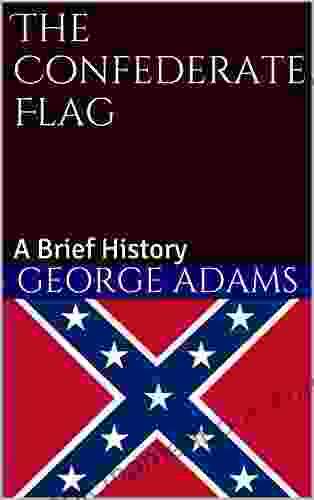
 Steve CarterA Comprehensive History of the Confederate Flag: Its Origins, Symbolism, and...
Steve CarterA Comprehensive History of the Confederate Flag: Its Origins, Symbolism, and... Corbin PowellFollow ·15.2k
Corbin PowellFollow ·15.2k Thomas HardyFollow ·14.9k
Thomas HardyFollow ·14.9k Philip BellFollow ·2.7k
Philip BellFollow ·2.7k Herman MitchellFollow ·16.7k
Herman MitchellFollow ·16.7k Isaac AsimovFollow ·18.7k
Isaac AsimovFollow ·18.7k George OrwellFollow ·5.7k
George OrwellFollow ·5.7k Trevor BellFollow ·3.8k
Trevor BellFollow ·3.8k Julio Ramón RibeyroFollow ·8.1k
Julio Ramón RibeyroFollow ·8.1k
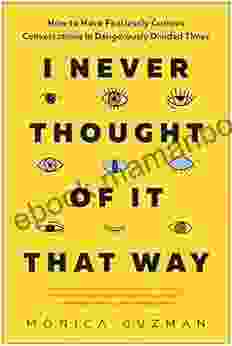
 Ross Nelson
Ross NelsonHow to Have Fearlessly Curious Conversations in...
In a world increasingly polarized by...

 Isaac Mitchell
Isaac MitchellFew Things to Keep in Mind for a Successful Introduction...
Writing an series...

 Dallas Turner
Dallas TurnerThe Ultimate Easy Key for Beginners: A Comprehensive...
Welcome to the world of...
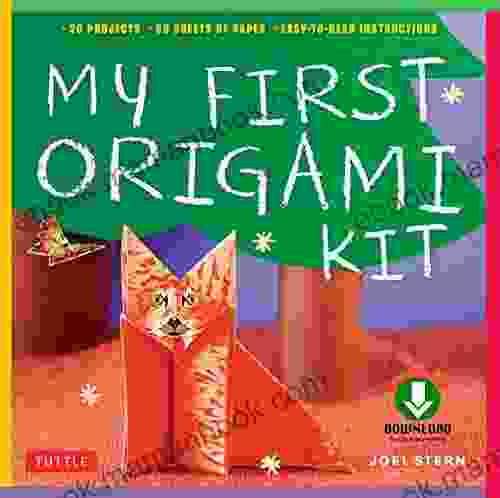
 Mitch Foster
Mitch FosterMy First Origami Kit: Ebook Downloadable Material...
Origami, the...

 Tony Carter
Tony CarterQuick, Easy, and Healthy Recipes to Treat Gut Infections...
Gut infections are a common problem that can...
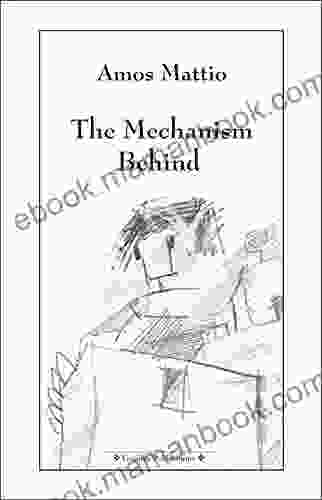
 Adrian Ward
Adrian WardThe Mechanism Behind Italian Poetry In English: Poesia...
The world of...
5 out of 5
| Language | : | English |
| File size | : | 46497 KB |
| Text-to-Speech | : | Enabled |
| Screen Reader | : | Supported |
| Enhanced typesetting | : | Enabled |
| Word Wise | : | Enabled |
| Print length | : | 200 pages |
| X-Ray for textbooks | : | Enabled |


